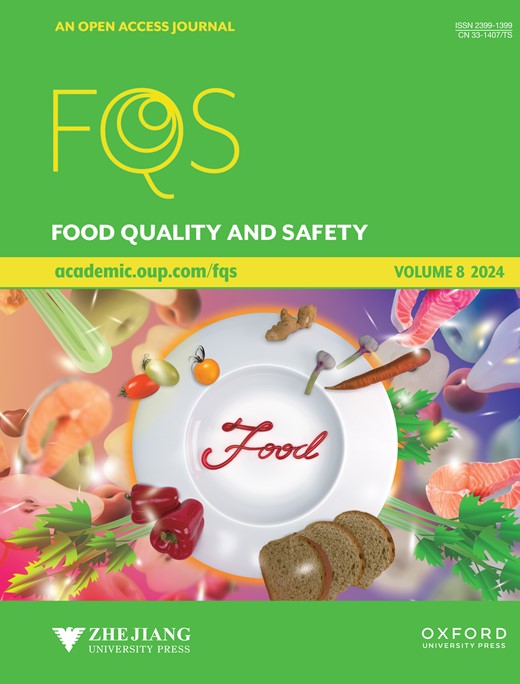Antibiofilm activity and synergistic effects of DNase I and Lysostaphin against Staphylococcus aureus biofilms
IF 3
3区 农林科学
Q2 FOOD SCIENCE & TECHNOLOGY
引用次数: 0
Abstract
In recent years, food safety has become the focus of global public health concerns. Microbial contamination is one of the most common food safety issues. Staphylococcus aureus is a common foodborne pathogen that can form biofilms on the surface of food processing equipment, leading to greater resistance to antimicrobial agents than occurs with planktonic bacteria. In this work, recombinant Escherichia coli BL21 (DE3) cells expressing optimised lysostaphin (Lst) were constructed, recombinant Lst was produced and purified, and Lst enzymatic assays were performed, followed by antimicrobial testing of Lst. Finally, a mixture of Lst and DNase I was tested for antibiofilm activity. The protein content of purified Lst was 0.6 mg/mL and the enzyme activity was 240 U/mL. The minimum inhibitory concentration (MIC) of Lst against S. aureus was 0.1 μg/mL. At 1 MIC, Lst exerted an effect on the growth, cell wall integrity and cell membrane permeability of S. aureus. Although Lst alone also showed good inhibition and disruption of S. aureus biofilms, inhibition and disruption of S. aureus biofilms was significantly greater when Lst was mixed with DNase I. This is probably because DNase I removes extracellular DNA, affecting biofilm formation and dispersing mature biofilms, and thereby facilitating penetration of Lst.DNase I 和溶菌酶对金黄色葡萄球菌生物膜的抗生物膜活性和协同效应
近年来,食品安全已成为全球公共卫生关注的焦点。微生物污染是最常见的食品安全问题之一。金黄色葡萄球菌是一种常见的食源性致病菌,它能在食品加工设备表面形成生物膜,从而对抗菌剂产生比浮游细菌更强的抗药性。在这项工作中,构建了表达优化溶菌酶(Lst)的重组大肠杆菌 BL21(DE3)细胞,生产和纯化了重组 Lst,进行了 Lst 酶测定,然后对 Lst 进行了抗菌测试。最后,对 Lst 和 DNase I 的混合物进行了抗生物膜活性测试。纯化的 Lst 蛋白含量为 0.6 mg/mL,酶活为 240 U/mL。Lst 对金黄色葡萄球菌的最小抑菌浓度(MIC)为 0.1 μg/mL。在 1 MIC 时,Lst 对金黄色葡萄球菌的生长、细胞壁完整性和细胞膜渗透性均有影响。虽然单独使用 Lst 也能很好地抑制和破坏金黄色葡萄球菌生物膜,但当 Lst 与 DNase I 混合使用时,对金黄色葡萄球菌生物膜的抑制和破坏作用明显增强。
本文章由计算机程序翻译,如有差异,请以英文原文为准。
求助全文
约1分钟内获得全文
求助全文
来源期刊

Food Quality and Safety
FOOD SCIENCE & TECHNOLOGY-
CiteScore
7.20
自引率
1.80%
发文量
31
审稿时长
5 weeks
期刊介绍:
Food quality and safety are the main targets of investigation in food production. Therefore, reliable paths to detect, identify, quantify, characterize and monitor quality and safety issues occurring in food are of great interest.
Food Quality and Safety is an open access, international, peer-reviewed journal providing a platform to highlight emerging and innovative science and technology in the agro-food field, publishing up-to-date research in the areas of food quality and safety, food nutrition and human health. It promotes food and health equity which will consequently promote public health and combat diseases.
The journal is an effective channel of communication between food scientists, nutritionists, public health professionals, food producers, food marketers, policy makers, governmental and non-governmental agencies, and others concerned with the food safety, nutrition and public health dimensions.
The journal accepts original research articles, review papers, technical reports, case studies, conference reports, and book reviews articles.
 求助内容:
求助内容: 应助结果提醒方式:
应助结果提醒方式:


